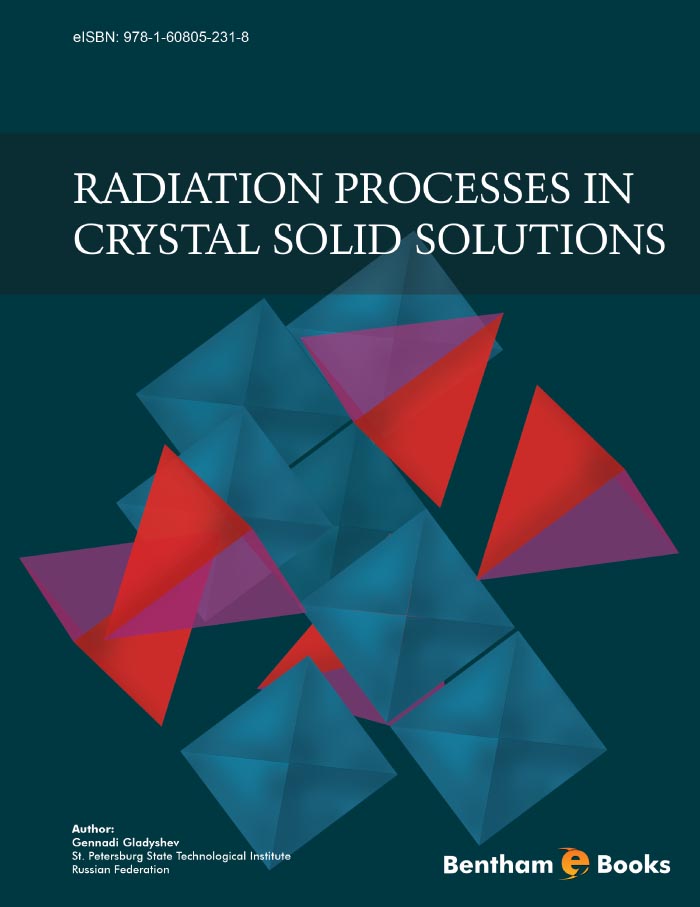Introduction
Radiation Processes In Crystal Solid Solutions is a monograph explaining processes occurring in two classes of crystal solids (metal alloys and doped alkali halides) under irradiation by various types of radiation (alpha, beta, gamma, X-radiations, ions). While metal alloys may differ in high radiation stability, solid solutions based on alkali halides are very radiation-sensitive materials. Radiation defect production mechanisms, intrinsic and extrinsic radiation defects, a role of complexes an impurity-radiation defect which explain distinction in radiating stability of the specified classes of solid solutions are discussed in this e-book. To describe radiation induced phase transformations, two approaches are highlighted: kinetic and thermodynamic. This e-book also includes research on the effect of small radiation doses in a structurally solid phase state of a solution along with a semi-quantitative estimation of radiation effects with respect to temperature changes. This e-book should be a useful reference for advanced readers interested in the physics of radiation and solid state physics.

